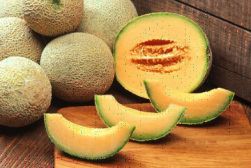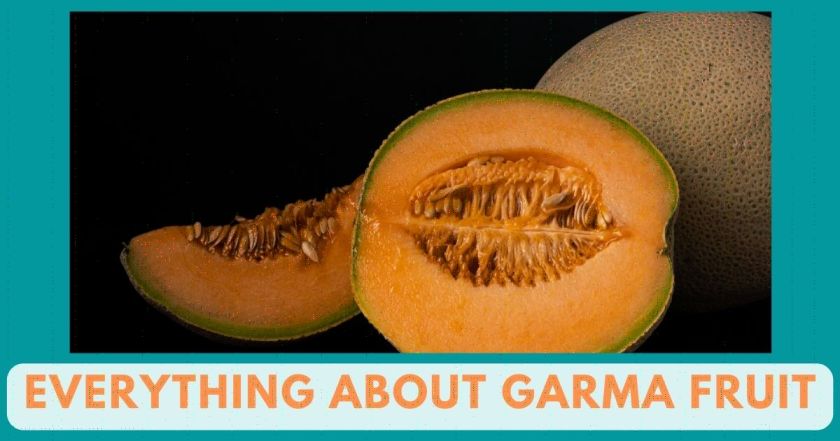Garma Fruit in English
- English name of Garma Fruit is “Cantaloupe”
BUY DRY GARMA FRUIT ONLINE
Garma Fruit in Malayalam
- Malayalam name of Garma Fruit is “Shamam / Thalkumbalam”
Garma Fruit in Tamil
- Garma Fruit meaning in Tamil is “Mulaam Pazham / Keerani Pazham”
BUY GARMA FRUIT JUICE ONLINE
Garma Fruit in Telugu
- Telugu name of Garma Fruit is “Kharbooja”
Garma Fruit in Kannada
- Kannada name of Garma Fruit is “Kharbuja”

Garma Fruit / Cantaloupe
You might not think of Garma Fruit as much of a fruit, but it’s actually a member of the melon family, and certainly not to be overlooked when it comes to your health. In fact, you can get some pretty great benefits from eating this tasty fruit! So if you’re curious about what Garma is and why you should eat it, keep reading!
Garma Fruit is a type of melon that’s widely consumed in the United States and around the world, yet surprisingly few people know much about it. This article will take you through all you need to know about this tasty fruit and why you should include it in your diet on a regular basis!
Garma is not just another fruit in the family of muskmelons, nor does it belong to the same genus as watermelons, honeydew melons, or casaba melons. Many people don’t know what exactly Garma Fruits are or what they look like, since it’s not something commonly found in many countries around the world. So let me tell you more about them! Here are some facts you might find interesting.
Garma Fruit (the cantelope) is a muskmelon that has been cultivated for hundreds of years. The early European settlers found these fruits growing wild in North America, with Native Americans eating them raw, dried or baked into breads and puddings. The word cantaloup comes from Provençal French and means melon with a crested top, which describes how they looked in medieval Europe. Although they were developed as far back as 6500 B.C., cantaloupes didn’t make their way to North America until sometime around 1640, when explorer Jean de Biencourt introduced them to Canada via France.
India has been home to Garma Fruits for more than a hundred years. It was introduced in India in 1892 by James Vick, a British horticulturist. He brought home cuttings from Africa and South America where he had lived as a boy after his father, who was also a horticulturist, found that they were particularly adapted to hot weather. At first, people weren’t interested in growing them, but within two decades, India’s lush plains were green with their production. Garma Fruits from India became very popular all over Europe before being exported to Australia and New Zealand. Today, India produces nearly eight million tonnes of Garma each year!
Garma Fruit has a very sweet taste, even if eaten alone without any other ingredients. Just like all melons, Garma Fruits are considered to be super fruits because they are packed with nutrients and are also very low in calories. In addition to having great health benefits, Garma Fruits are quite tasty too! And did you know that when ripe, their smell resembles that of honeydew melon?
Garma Fruit Benefits
While its flavors may vary by region, many have a sweet-tart flavor. Beyond just its refreshing taste, eating Garma Fruit has other benefits too.
- It’s packed with antioxidants called carotenoids, which help fight free radicals that cause aging.
- One serving contains more than 100 percent of your daily vitamin C needs, helping to keep your immune system functioning properly during cold and flu season.
- You can also reap major health benefits from eating Garma Fruit as part of a heart-healthy diet due to its potassium content.
- The mineral present in Garma fruit helps lower blood pressure.
- Garma reduces risk for heart disease when consumed in moderation.
- Garma contains high amounts of vitamins A, C, B6 and folate as well as lots of minerals such as potassium, iron, zinc and copper. Plus, they’re only 35 calories per cup (151 g)!
- Garma Fruit contains high amounts of beta-carotene, which converts into vitamin A once consumed by our bodies. This vitamin is essential for healthy eyesight, skin health and immune function.
- Vitamin A deficiency can lead to night blindness, dry eyes and hair loss, so make sure to get enough vitamin A by consuming Garma Fruit.
Nutritional Information about Garma Fruit
Melons are predominantly made up of water, but they also contain fiber, which helps keep you feeling full. One cup of Garma Fruit has 21 percent RDA of vitamin C, 8 percent RDA of folate, as well as small amounts of other nutrients. Watermelon contains more vitamin C than Garma Fruit, but Garma contains more vitamin A. It’s also a good source of potassium, with about 550 mg per cup (or about 10 percent RDA). One cup will give you 23 percent RDA for dietary fiber, too.
For such a nutrient-dense food with little calories (100 g have only 40), eating melon is an excellent way to fill up without filling out! Many people don’t realize that Garma Fruit is not just one type of melon—it’s actually a group name for any type of melon. That means there are multiple types of Garma Fruits available at different times throughout the year, including muskmelons and honeydew. All varieties can be eaten raw or cooked, though some have seeds inside them that make them less ideal for salads or sandwiches.
Seasonality of Garma Fruit
Garma Fruits are a summer treat. Most grocery stores only sell them for about two months out of each year (May-August). Some farmers’ markets offer them year-round, but most don’t have a lot of variety. If you buy Garma Fruits in winter or early spring, they usually aren’t quite ripe yet—and therefore not very sweet or tasty. Look for melons that feel heavy for their size; sound hollow when tapped; and have a light spot where they rested on the ground while growing (this part is called a field spot). And steer clear of any with bruises or soft spots!
Growing information on Garma Fruits
In order to keep your Garma Fruits fresh, there are a few things you need to know. First, they are like most other fruits in that they’re best when left out on a kitchen counter or on a shelf (never in a refrigerator), even after being cut. However, if you want to store them for later use, most experts recommend keeping them in an airtight container with sugar added (1/2 teaspoon per pound). The sugar helps preserve flavor and stops mold from growing on your Garma. Make sure that any container with an unsealed lid is wrapped tightly; plastic wrap will do just fine.








